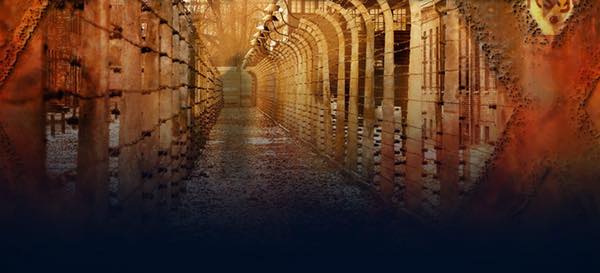
The Sparks Fly Upward, which was staged at the Maltz Performing Arts Center from June 9-12, is the creation of Cathy Lesser Mansfield. She was not only the composer and librettist, but conceived the musical’s book. Lesser, a Cleveland area native, is founder and executive director of The Sparks Fly Upward Foundation, a nonprofit organization dedicated to educating people about the Holocaust, genocide and tolerance through presentations of Sparks and ancillary activities. She teaches the course “Holocaust and the Law” at Case Western Reserve University School of Law.
The story is told in the opera/operetta format of music and lyrics with onstage electronic pictures and notations. Extensive research by Lesser has resulted in historical accuracy. Though the characters have been created for this piece, they are each a complication of real people.
Composing a piece of music is challenging as it requires not only knowledge of musical form and the instruments that create the sounds, but awareness of developing a purposeful score.
Crafting a play demands that the writer not only develop a meaningful plot and realistic dialogue that respects that the spoken word is not the same as the written word. It requires an awareness of the restrictions of placing the creation on a stage with the need for movement, interactions, a set, lights, sound, costumes and special effects.
Developing a musical is a daunting task. Not only are there the requirements of the music and play, but there is consideration of choreography, individual and group vocalization, and theatrical staging. Few, if any, musicals are achieved in their first, second or even third incarnation. It usually takes rewriting and reconceptualizing. Rodgers and Hammerstein, Irving Berlin, Frank Loesser and Cole Porter all attempted, and failed, to make George Bernard Shaw’s classical Pygmalion into a musical.
Though it holds much promise, The Sparks Fly Upward should be regarded as a work in progress. The score is moving, highlighting the many emotions experienced by the Jews of Berlin, and many of the songs and scenes are captivating.
Questions arise in both script and staging. There is an inconsistency in acting styles, ranging from ultra-melodramatic to non-involved. There are long pauses for set changes, many of which add nothing to the real story. (One might ask why the furniture and inconsistently used doors were necessary.) The Job inclusions were often difficult to hear and in some instances did not fit smoothly into the story.
The electronic graphics, which were very successfully used in the closing sections, often did not visually parallel to the story being told. Setting the orchestra on the floor in the center of the stage, directly between the audience and the performers, not only caused sightline problems for the audience and a wall of emotional separation between the actors and the viewers, but glaring lights emitted from the music stands. Why wasn’t the beautifully written program’s Story Synopsis more incorporated into the electronic visuals? They would have made for an excellent guide to the tale.
Capsule judgment: Kudos to Cathy Lesser Mansfield, Jeffrey Lesser and Daniel Singer for giving birth to a historically accurate production. They can be of proud what they have produced so far. As a work in progress, it can be hoped that they will take the work to the next level. The project would be aided by a non-biased dramaturgy and a staging director viewing what has been developed and what needs to be tweaked for further development.
[Written by Roy Berko, member: Cleveland Critics Circle and American Theatre Critics Association]